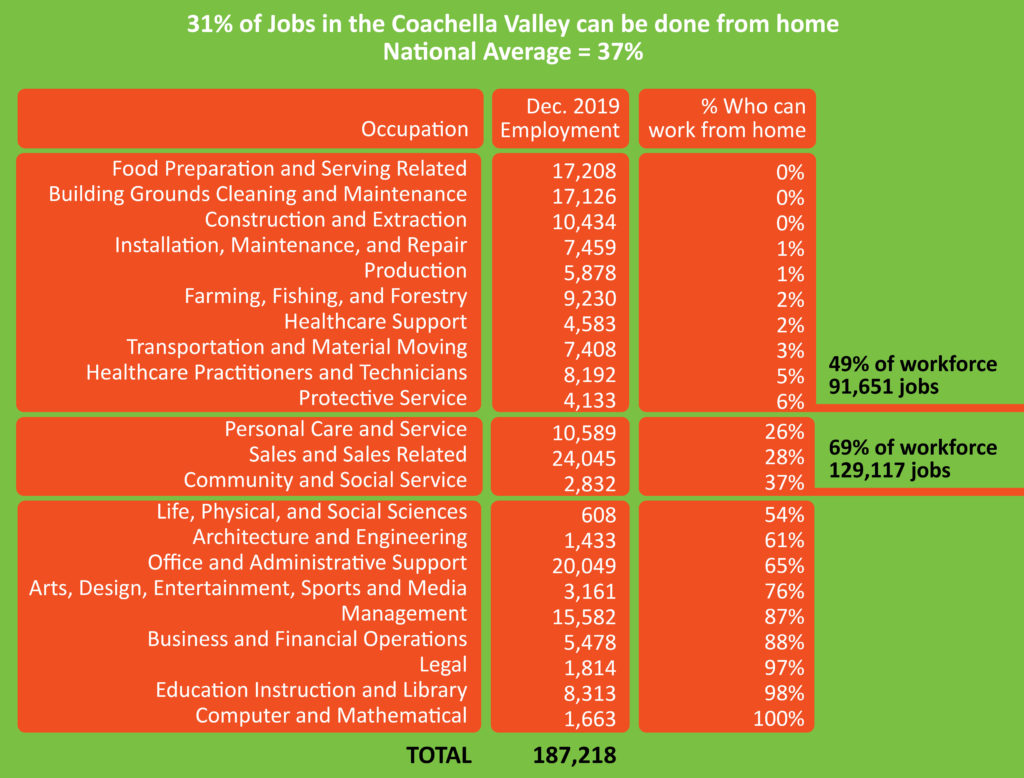The COVID pandemic upended the nation’s workforce. Some were fortunate to transition to working from home and kept their positions and wages throughout the pandemic lockdowns. Others were not so privileged. A Pew Research report found unsurprisingly that 90% of those who lost their jobs in February and March of 2020 were in positions that could not be teleworked. And for the Coachella Valley, such positions are overrepresented in our economy.
In October we released a report called Who Can Work from Home. Using methodology from a University of Chicago white paper called “How Many Jobs Can be Done at Home?” we estimated what percentage of workers in each major occupational sector are able to do their jobs at home here in the Coachella Valley. Below is a table summarizing our analysis.
Out of an estimated 187,218 pre-COVID jobs in the valley, 58,406 could be done remotely, or 31.2% of valley jobs, as compared to 37% in the United States. Two of our top four employment sectors have an estimated 0% of workers that can work at home, and our highest sector, Sales and Sales Related, has an estimated 28% who can work from home. Nearly half of all jobs in the Coachella Valley are in sectors where 6% or less are estimated to be able to work from home.
With these data in mind, what does the remote working model mean for the Coachella Valley? Will this shift in remote working become a permanent change? According to Pew, only 7% of US workers had a “flexible workplace” benefit, or telework, before the Covid-19 outbreak. Now, employers expect nearly 2 in 5 employees will still be working remotely at the end of 2021, as reported in a recent CNBC story. Many employers, especially in the tech industry, are extending their work-from-home policies.
This is wonderful news for CVEP’s efforts to attract and engage remote workers moving to enjoy the Valley’s high standard of living at a relatively lower cost. But as we see from the data, less of our population can work from home. And even for those who can work remotely, workers with small children or caregivers to aging adults can find this challenging. And for young workers starting their careers, remote working can make it difficult to get acclimated and create close relationships with their coworkers.
How does remote working affect businesses that rely on the day-worker population that frequent their establishments, like lunch and coffee spots? And how will this trend affect commercial real estate and related businesses? CVEP is committed to closely monitoring these emerging trends and addressing the opportunities and challenges the new workplace will reveal.










